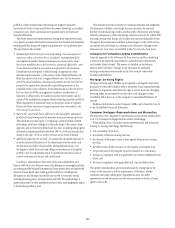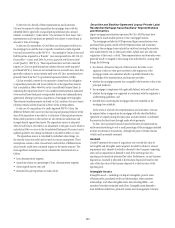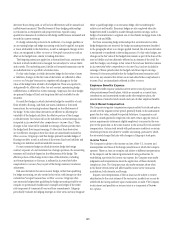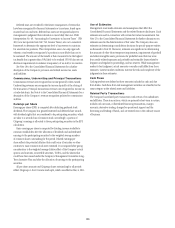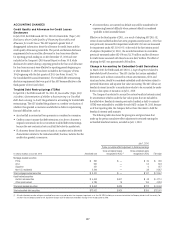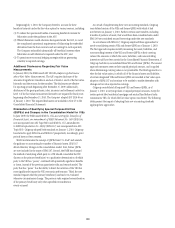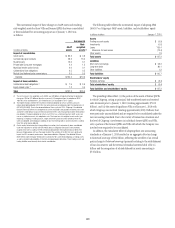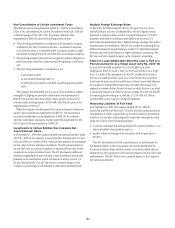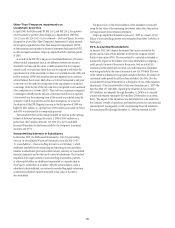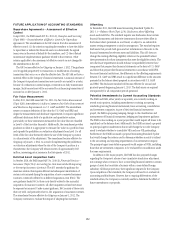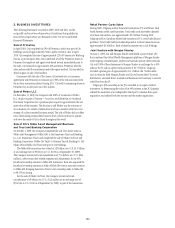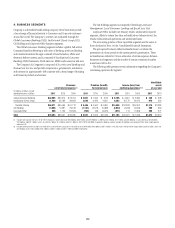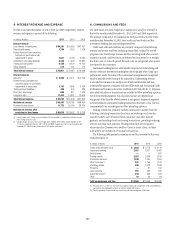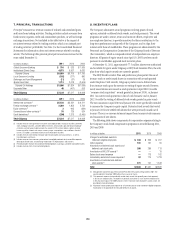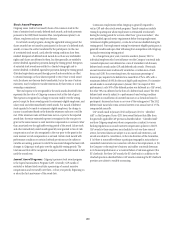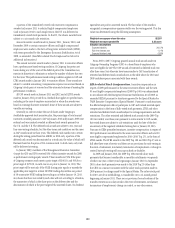Citibank 2011 Annual Report Download - page 173
Download and view the complete annual report
Please find page 173 of the 2011 Citibank annual report below. You can navigate through the pages in the report by either clicking on the pages listed below, or by using the keyword search tool below to find specific information within the annual report.151
Other-Than-Temporary Impairments on
Investment Securities
In April 2009, the FASB issued FSP FAS 115-2 and FAS 124-2, Recognition
and Presentation of Other-Than-Temporary Impairments (FSP FAS
115-2) (now ASC 320-10-35-34, Investments—Debt and Equity Securities:
Recognition of an Other-Than-Temporary Impairment), which amends
the recognition guidance for other-than-temporary impairments (OTTI)
of debt securities and expands the financial statement disclosures for OTTI
on debt and equity securities. Citigroup adopted the FSP in the first quarter
of 2009.
As a result of the FSP, the Company’s Consolidated Statement of Income
reflects the full impairment (that is, the difference between the security’s
amortized cost basis and fair value) on debt securities that the Company
intends to sell or would more-likely-than-not be required to sell before the
expected recovery of the amortized cost basis. For available-for-sale (AFS) and
held-to-maturity (HTM) debt securities that management has no intent to
sell and believes that it more-likely-than-not will not be required to sell prior
to recovery, only the credit loss component of the impairment is recognized
in earnings, while the rest of the fair value loss is recognized in Accumulated
other comprehensive income (AOCI). The credit loss component recognized
in earnings is identified as the amount of principal cash flows not expected
to be received over the remaining term of the security as projected using the
Company’s cash flow projections and its base assumptions. As a result of
the adoption of the FSP, Citigroup’s income in the first quarter of 2009 was
higher by $631 million on a pretax basis ($391 million on an after-tax basis)
and AOCI was decreased by a corresponding amount.
The cumulative effect of the change included an increase in the opening
balance of Retained earnings at January 1, 2009 of $665 million on a
pretax basis ($413 million after-tax). See Note 15 to the Consolidated
Financial Statements for disclosures related to the Company’s investment
securities and OTTI.
Noncontrolling Interests in Subsidiaries
In December 2007, the FASB issued Statement No. 160, Noncontrolling
Interests in Consolidated Financial Statements (now ASC 810-10-45-
15, Consolidation—Noncontrolling Interests in a Subsidiary), which
establishes standards for the accounting and reporting of noncontrolling
interests in subsidiaries (previously called minority interests) in consolidated
financial statements and for the loss of control of subsidiaries. The Standard
requires that the equity interest of noncontrolling shareholders, partners,
or other equity holders in subsidiaries be presented as a separate item in
Total equity, rather than as a liability. After the initial adoption, when a
subsidiary is deconsolidated, any retained noncontrolling equity investment
in the former subsidiary must be measured at fair value at the date of
deconsolidation.
The gain or loss on the deconsolidation of the subsidiary is measured
using the fair value of the remaining investment, rather than the previous
carrying amount of that retained investment.
Citigroup adopted the Standard on January 1, 2009. As a result, $2.392
billion of noncontrolling interests were reclassified from Other liabilities to
Total equity.
DVA Accounting Misstatement
In January 2010, the Company determined that an error existed in the
process used to value certain liabilities for which the Company elected
the fair value option (FVO). The error related to a calculation intended to
measure the impact on the liability’s fair value attributable to Citigroup’s
credit spreads. Because of the error in the process, both an initial Citi
contractual credit spread and an initial own-credit valuation adjustment
were being included at the time of issuance of new Citi FVO debt. The own-
credit valuation adjustment was properly included; therefore, the initial Citi
contractual credit spread should have been excluded. (See Note 26 to the
Consolidated Financial Statements for a description of own-credit valuation
adjustments.) The cumulative effect of this error from January 1, 2007 (the
date that SFAS 157 (ASC 820), requiring the valuation of own-credit for
FVO liabilities, was adopted) through December 31, 2008 was to overstate
income and retained earnings by $204 million ($330 million on a pretax
basis). The impact of this adjustment was determined not to be material to
the Company’s results of operations and financial position for any previously
reported period. Consequently, in the accompanying financial statements,
the cumulative effect through December 31, 2008 was recorded in 2009.



